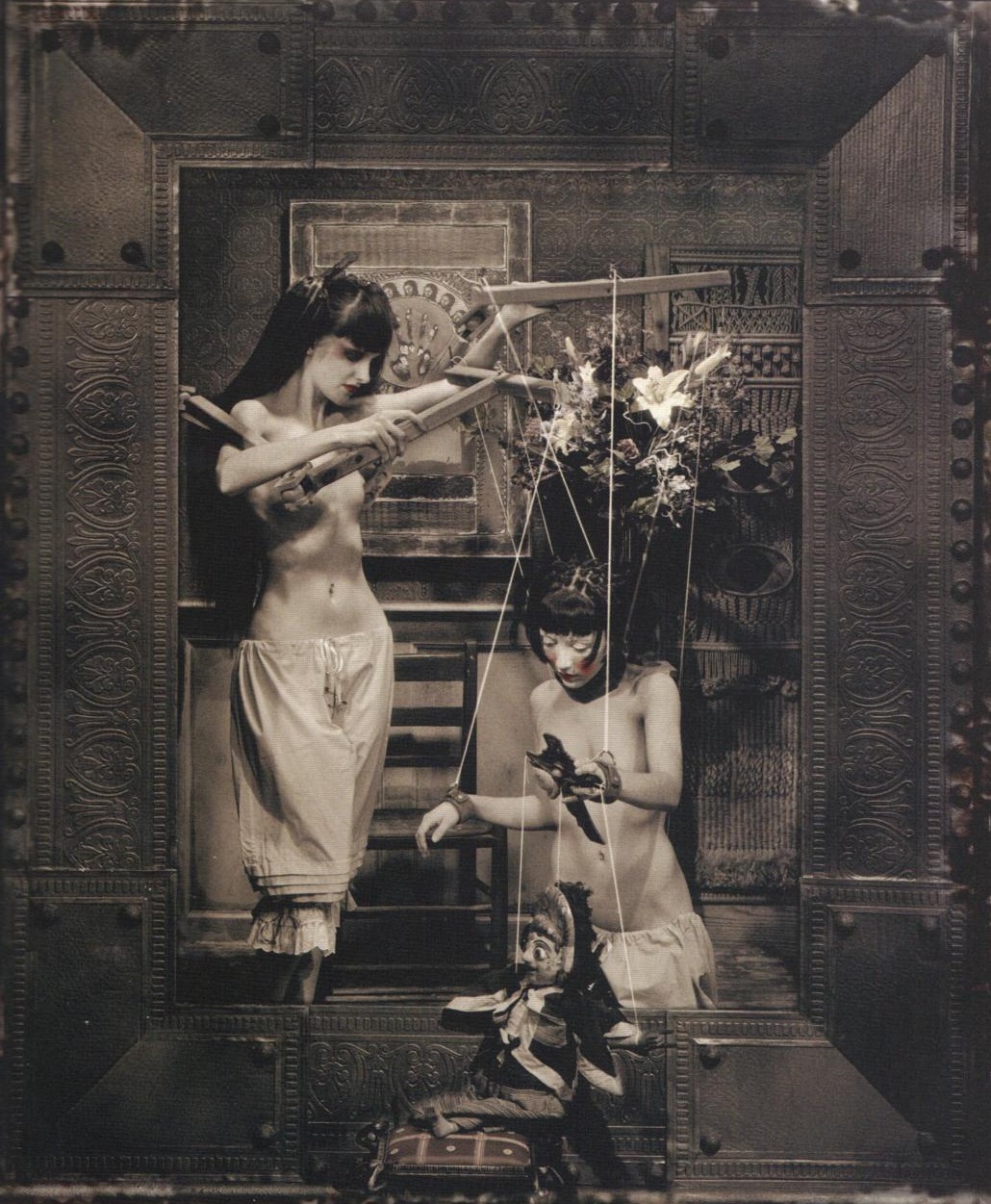John Santerineross, considered a neo-symbolist photographer, creates uncanny, sinister, erotic imagery whilst focusing on conveying moods and evoking states of mind- an approach favoured by the symbolists in art in general. Neosymbolism explores mystical, emotional, spiritual, as well as sensual themes, the unconscious mind and dreams, metamorphoses of good and evil, the connection between image and soul, employing private and universal symbols. John Santerineross’ photographs incorporate religious symbolism and iconography, mixed with eroticism, occultism, horror, and a hint of pain; his subversive combination of the sacred and the profane has attracted both admiration and criticism. Whilst in some photography magazines he has been called “the world leading Neo-symbolist artist“, Catholic League President William A. Donohue describes Santerineross’ as a nihilist and one of the “artistic assassins and moral anarchists who want to artistically assassinate Christianity, especially Catholicism“. Santerineross does not confirm or deny any statements or interpretations due to his belief that art should appeal to each viewer on a personal level; that they should define his art for themselves rather than being limited by an explanation, another view also held by the early symbolists.
The Symbolist manifesto (1886, by Jean Moréas) emphasises:
“Truth in subjective experience. Truth in apparent chaos and insanity. Truth in excess and extravagance. The risk of what was once rebellious to become conformist.”
John Santerineross’ collections feature unsettling erotic imagery, dream symbolism, and the nightmarish aspects of the human psyche, as he delves into the dark recesses of the mind where sado-masochistic fantasies and decadent narratives are generated. Psychoanalytically informed, he has the awareness that many of our repressions and fears are rooted in childhood trauma, which draws the obscure map of our unconscious mind and desires. The uncanny is linked to repressed ideas about childhood, which are alienated via repression and sometimes return to us through strangely familiar moments, through a sentence, a word, or a piece of art that can pierce through the state of repression and bring back certain feelings, wishes, and thoughts originating in childhood. It seems that his photographs allegorically reflect and encapsulate the dimension of desire and repression.
Website: www.santerineross.com








